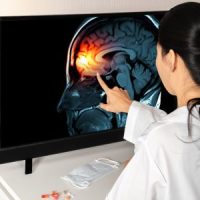Brain Stem Injuries

The brain is a complex organ that is made up of many specialized areas, all of which work together to control thought, voluntary movements, and basic functions like breathing and sleeping, as well as coordination and balance. While injury to any part of the brain can disrupt the smooth operation of these systems, injuries to certain areas, including the brain stem, tend to have particularly devastating consequences. If you or a loved one suffered head trauma in an accident for which you were not at fault, you should consider reaching out to an experienced team of Fort Lauderdale traumatic brain injury lawyers, who can help you seek compensation for your losses.
What is the Brain Stem?
The brain stem is the part of the brain located at the back of the skull that acts as the main connective trunk of tissue between the brain and the nerves in the spinal cord. This area of the brain plays a crucial role in the brain’s ability to communicate with the body. For instance, the brain stem controls both voluntary and involuntary bodily functions, including:
- Movement;
- Breathing;
- Swallowing;
- Digestion;
- Regulation of the circulatory system;
- Body temperature;
- Heartbeat; and
- Conscious awareness.
Injuries to the brain stem can affect these functions, even permanently damaging them.
Brain Stem Injuries
The types of problems a person could face after suffering a brain stem injury will largely be dictated by which part of the brain stem sustained the brunt of the trauma. There are three primary regions in the brain stem, all of which work cooperatively to control the body. These regions include:
- The pons, which is the uppermost region in the brain stem and is responsible for controlling breathing, balance, swallowing, hearing, eye movements, facial muscle control, posture, and bladder function;
- The midbrain, or the middle region of the brains stem, which is responsible for processing auditory information, regulating sleep and body temperature, and the functioning of the visual system; and
- The medulla oblongata, which is a pillar-like region located at the base of the brain stem and handles a number of the basic functions of the autonomic nervous system, such as the proper functioning of the lungs and heart, as well as involuntary reflexes, like sneezing, coughing, and vomiting.
A person who suffered damage to more than one part of the brain stem could expect to encounter problems with a variety of these functions.
Learn More About Your Legal Options
Because it is positioned deep within the posterior part of the brain and plays such a complex role in the body’s functioning, it is difficult to obtain fully restorative treatment for brain stem injuries. For this reason, many accident victims who sustain these types of injuries find themselves suffering with disability for years to come. If you suffered a brain stem injury in an accident, you have the right to seek recovery. Schedule a free consultation with one of our dedicated traumatic brain injury lawyers at Boone & Davis today to learn more. You can reach a member of our legal team by calling 954-566-9919 or by sending us an online message.
Resource:
cancer.gov/publications/dictionaries/cancer-terms/def/brain-stem
